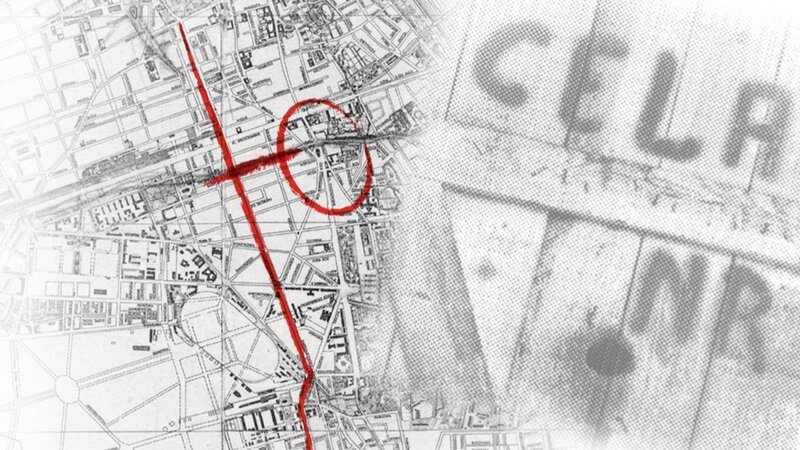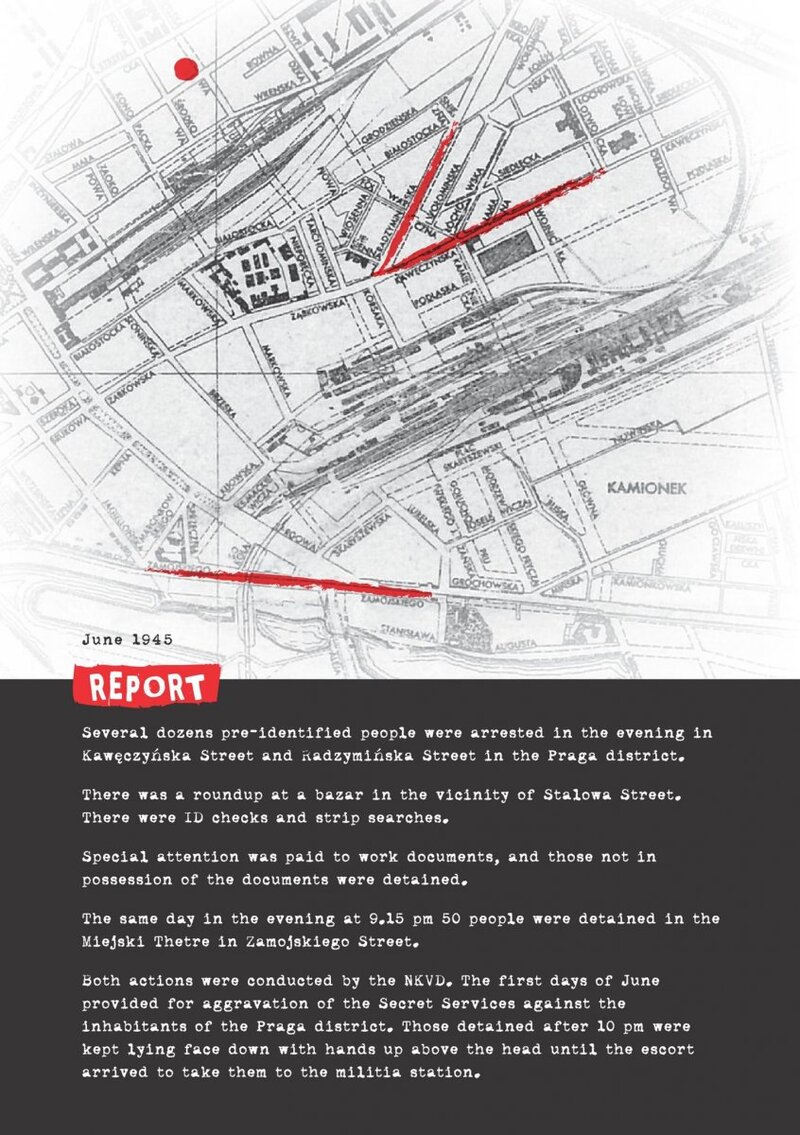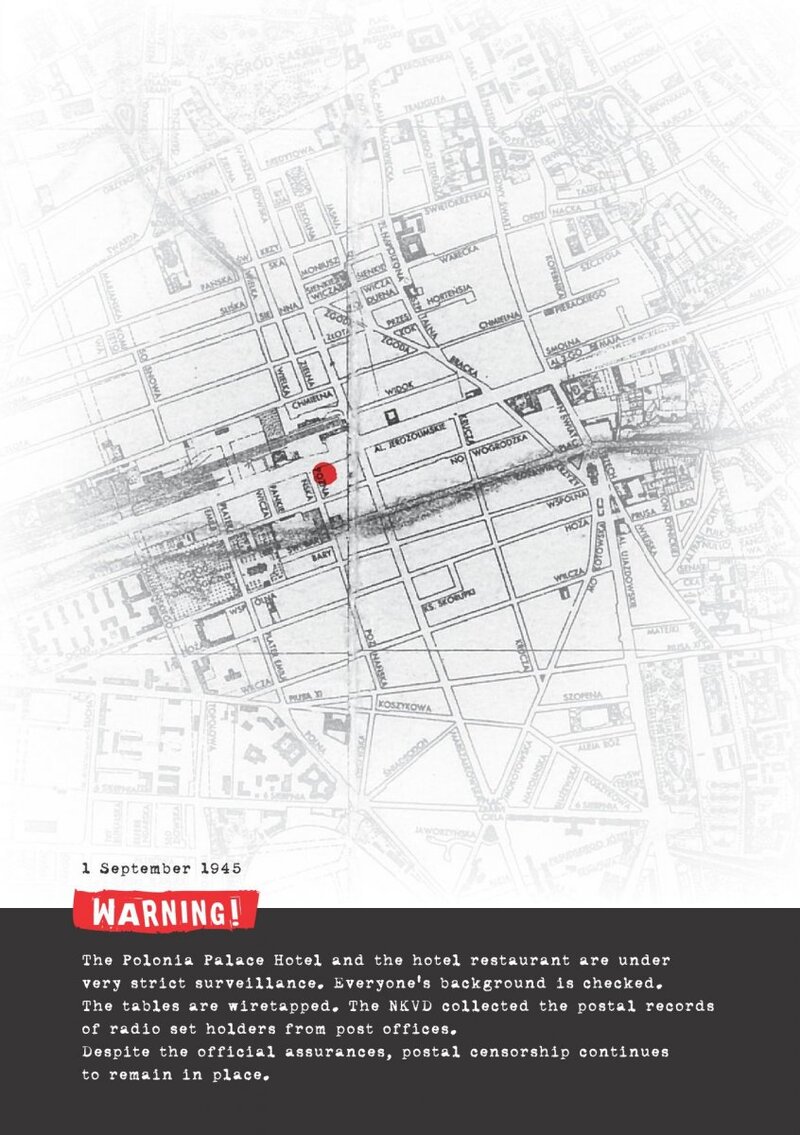Life in the destroyed capital revived extremely dynamically, however, another dark world was emerging, repeatedly demanding new victims. They would disappear from their homes, from work, from the streets for several months, years, and sometimes for their whole lives. This world left the families of the "missing" in panic, fearing for the fate of their loved ones and their own. All this was happening in parallel - right next to each other, in the same districts, houses, at the same time. It divided the inhabitants of Warsaw into two very different communities - looking at the same city from a completely different perspective.
The first indications of Warsaw's significance in the activities of the Soviet and Polish communist security apparatus were clear to the inhabitants of the Praga district in the late autumn of 1944. It turned out that both the Soviets and Polish communists perceive the right bank of the Vistula river primarily as a source of trouble. Residents of the Praga district had eye witnessed the betrayal of the Red Army, failing to help the Warsaw insurgents in the summer of 1944, hence their attitude to the new authorities was assessed as "very uncertain". For this reason, a decision was taken to locate centers of repressive action covering the entire region dominated by the Red Army, in this very place. The preserved residential buildings, which could have provided shelter for Warsaw insurgents, paradoxically became a curse for the residents.
New tenants began to move into the remaining tenement buildings at 1,9,17,28 and 34 Jagiellońska Street and the Władysław IV High School (No. 38); at 8, 10 a, 46 Strzelecka Street; 66, 68 11 Listopada Street.; 3 Szwedzka Street.; 2/4 Wileńska Street.; 27 and 74 Targowa Street.; 3 Otwocka Street.; 12 and 41 Kawęczyńska Street.; 7 Sierakowskiego Street - first the NKVD [the People’s Commissariat for Internal Affairs], Soviet military counterintelligence (SMERSH), War Tribunals of the Red Army, and then the UB [Ministry of Public Security], MO [Citizens’ Militia], and KBW [Internal Security Corps]. Under their "rule," the quiet buildings changed beyond recognition. Flats were adapted into interrogation rooms, cellars used thus far as coal depots or pantries became detention cells, places of torture and execution, and the previously quiet yards were filled with constant cries of tortured people, later to become the nameless graves of countless victims. The local residents tried to lead relatively normal lives , bypassing these places from afar, trying not to hear or see the tragedies which lurked behind the iron bars of the basement windows.
The takeover of the ruins of left-bank Warsaw in January 1945 by the Red Army and the Polish People's Army only accelerated the process of installing more communist (Soviet and Polish) security services in the capital. The announcements by General Ivan Serov, NKVD plenipotentiary with the 1st Belorussian Front, sent to the People's Commissar for Internal Affairs of Soviet Russia, Lavrenty Beria, on 19 January were ominous for Warsaw residents: "In view of bringing order to Warsaw, we have done the following: 1. We organized a set of operational-checkist activities to filter all potential residents heading to the Praga district". The command of the Soviet security apparatus leading the entire operation was temporarily located in the tenement house of Zygmunt Jórski on the corner of Strzelecka and Środkowa Street. People detained in the entire region were brought to the basements of the building.
DSZ intelligence report dated the summer of 1945.
The building at 13 Środkowa Street [on the corner of 8 Strzelecka Street ] is occupied by the security authorities. Prisoners are kept and interrogated there. The house is fenced with barbed wire bearing the inscriptions: no entry. In the evenings, the building is illuminated by four strong floodlights and monitored outside by additional guards. Residents of the neighbouring houses say that there are constant moans coming from the building, as well as the sound of gunshots, perhaps related to executions. In any case, it is a fact that people in the basement of the building die as a result of beatings during interrogations carried out by the security officers.
It was from Strzelecka Street that, after brutal interrogations, the prisoners were transported to the former "Pocisk" factory at 110 Marsa Street in Rembertów, transformed at that time into Special Camp No. 10. In the winter of 1945 - after the beginning of the January offensive - the NKVD command organized a new centre on the left bank of the Vistula in Włochy near Warsaw at 14 and 16 Cienista Street. It is not a coincidence that the first Warsaw branch of the Main Information Board of the Supreme People's Command of the Polish Army was located nearby - at 2 Świerszcza Street . The branch comprised mostly of Soviet military counterintelligence officers delegated from the Red Army – SMERSH (90%). It was to the tenement house in Cienista Street that the leaders of the Polish Underground State, insidiously captured as a result of the "Pruszków provocation", were brought on 27 March 1945. It was from February to October 1945 that nearly 1,000 arrested Poles passed through the basements of the villa at 2 Świerszcza Street.
The Polish security service also gradually developed its branches in Warsaw. From Otwock, the Public Security Office of the capital city of Warsaw moved first to the railway buildings at 2/4 Wileńska Street, and then to the building at 4 Cyryla i Metodego Street, previously belonging to the Orthodox Church. The former Jewish dormitory on the corner of 7 Sierakowskiego Street and Szeroka Street (now Kłopotowskiego) first became the seat of the Public Security Office (from January 1945 the Ministry of Public Security), and then for many years remained the seat of the Provincial Public Security Office in Warsaw. Their basements also quickly filled with hundreds of detainees.
From the beginning of 1945, the Polish communist security apparatus gained new locations on the left bank of the Vistula. As in the Praga district, they selected buildings which remained intact after the war - preferably free-standing - surrounded by a wall, with spacious basements.
This way, buildings in the district of Żoliborz at 12 Pogonowskiego Street , in the district of Mokotów - at 11 Grażyny Street, in the district of Wola, at 25a Górczewska Street - forming the "northern", "southern" and "western" branches of the Warsaw Security Service, or the GZI ( Main Directorate of the Information of the Polish Army) detention center located in the palace at 11 Płocka Street, gained new functions. People began to be terrified of Wilcza Street , with the police detention centre at number 58 and the NKVD facility in building number 29; Karowa Street with the garrison court and the detention centre located in the basement of the building of the Polish Society of Hygiene - No. 31 and the KG MO [Main Command Headquarters of the Citizens’ Militia] in the tenement house at number 14/16, near the EKD stop in Nowogrodzka Street; the Polonia Palace Hotel under constant surveillance by the officers of the Soviet and Polish security apparatus stationing there. Soon, the following ominous edifices joined them: MBP [Ministry of Public Security] at 4, 6, 6 a Koszykowa Street and their backup facility at 2 św. Teresy Street, as well as the Main Directorate of Information of the Polish Army at 2 Oczki Street.
Within the city there were also entire units subordinate to the NKVD and the MBP, they were to keep the inhabitants of the capital under control. 500 -700 soldiers of the 3rd and then 2nd Battalion of the 2nd Rifle Regiment of the 64th NKVD Shooting Division for almost two years (until mid-1947) stationed first in Szwedzka Street and Strzelecka Street, and later in the Bema Fort near the Powązki Military Cemetery. Two battalions of the Internal Security Corps were stationed at the Institute of Physical Education in the Bielany area and on the corner of Żelazna and Leszno Streets. The operational battalion subordinated to KG MO was located in Karowa Street. MBP military troops also occupied the former barracks in Boernerów, while the command buildings were stationed on the corner of Rakowiecka Street and Puławska Street.
Prisons and camps were to play one of the most important roles in this system of repression established after 1945 on the rubble of Warsaw. As early as at the end of 1944 in the Praga district, the Soviets created the first two such institutions - at 8 Skaryszewska Street (using the infrastructure of the former German labour camp) and at 11 Listopada Street in barrack 36 of the Polish Army. While the first of them, located in the building of the former J. Jasiński junior high school, ended its departmental "career" relatively quickly (with the end of 1945), the second remained in the capital's landscape for long - as the Warsaw III detention and criminal prison. The "fame" of the crimes that had been committed in it, and, above all, the indelible memories of Warsaw residents about them, finally prompted the authorities to liquidate it in the 1960s in an attempt to definitively erase the traces of the crime - at least the material traces.
In the 1950s similar steps were taken with regard to the camp in Gęsia Street (also known as the Warsaw II prison) - using part of the remaining buildings of the German KL Warschau. It operated on a literally blood-soaked area, next to the first workers' blocks of Muranów that were being built in parallel. For many years it was a convenient place for the MBP to repress political opponents, as well as a source of cheap labour for many projects implemented in Warsaw by the Ministry.
However, the most important role on the map of communist crimes in Warsaw was played by the detention centre at 36 Rakowiecka Street - called the prison in the Mokotów district or the Warsaw I prison. Opened in August 1945, and successively expanded in the second half of the 1940s, it became a symbol of the most horrible crimes committed by communists in the first post-war decade - not only on a Warsaw and regional scale, but also nationwide. It was there, because of the direct subordination of the ministerial headquarters, that the most important opponents of the communist system were brought - real and imaginary - from all over Poland. It was there that the leaders of the Polish independence movement who miraculously managed to survive the repression of the German and Soviet occupiers were murdered. This was done with the same enthusiasm in the late 1940s as in the early 1950s. It was after the actual liquidation of the armed and political resistance that the following were murdered: Lieutenant Colonel Antoni Olechnowicz (8 February1951), Major Zygmunt Szendzielarz, Lieutenant Colonel Łukasz Ciepliński and Major Mieczysław Kawalec (1 March 1951), General August Emil Fieldorf (24 February1953), Father Zygmunt Kaczyński (13 May 1953), or one of the last partisans of the Mazowsze region - Stanisław Dubielak (27 October 27 1955).
Over the years, communist terror changed its nature, some of the previously described places, being originally ordinary residential buildings, after a few months or years lost their repressive character, returning to their basic functions. The tenants and neighbours changed over the years, and the number of witnesses who could testify to the dramatic past decreased.
Despite numerous efforts made by the communist security apparatus in the definitive blurring of traces of the crimes, Warsaw residents always somehow managed to find a way to commemorate them. There was always someone who saw and remembered at least one of those hundreds of ghostly night processions, the last route of the murdered heroes. It is no coincidence that on All Saints Day candles were burning at the Służewiec cemetery, where those murdered in Rakowiecka Street were buried until 1948. It was no coincidence that they appeared at Lot "Ł" (the so-called Łączka) of the the Powązki Military cemetery where the bodies of those murdered in the Mokotów prison were buried until 1948, the Bródno cemetery, the Jewish cemetery in the Praga district, the cemetery established during the cholera epidemic, and many other places in the capital. After all, there were almost over 350 victims of the Rakowiecka prison; several hundred of the prison in 11 Listopada Street, the bones of whom were unearthed during the construction of a housing estate in the 1960s and secretly disposed of as rubbish under the supervision of the Security Service; several hundred victims of Gęsiówka, unknown numbers of victims of Strzelecka, Oczki, Świerszcza, Cyryla i Metodego and Koszykowa Streets.
In fact, the red map of Warsaw was much larger and more sinister. It is over 17,000 arrested by the WUBP [Provincial Office of Public Security] in Warsaw, more than 4,000 detained by the capital "security police", 8,000 Warsaw insurgents - residents of the capital identified by the Ministry of Security by name and entered in the so-called operational records. This is a picture of the capital that was present throughout the first post-war decade in the shadow of the "red map".
On this map, however, there were not only places of communist repression, but also buildings "occupied" by the Soviets for many years. It was also composed of the buildings which were not destroyed during the war and were seized by the Security Ministry, so that officers living in their walls, such as Różański, Fejgin, Romkowski, Czaplicki, Humer, Dusza, Kaskiewicz, Kwasek and many others, could simply live in comfort with access to their own stores, kindergartens, schools and health centres. This is how whole departmental enclaves were created in Mokotów, Sadyba, Boernerów, Saska Kępa, Czerniaków, taken over illegally from legitimate owners or designed and built (with the participation of prisoners) on their plots by the MBP in the 1940s and 1950s.
Some of the Security officers, such as Bronisław Szczerbakowski returned thanks to the departmental quarters, to their former work places, e.g. 8 Strzelecka Street. They did not regret anything. They were not disturbed by the cell numbers remaining on the basement doors, or hundreds of inscriptions carved on the walls, or the bodies of those buried nearby. Paradoxically, thanks to their peculiar - difficult to understand - sense of sensitivity many material traces of communist terror – such as those preserved in Strzelecka Street - have remained to this day, providing an indisputable testimony to the existence of the "red map of Warsaw".
Tomasz Łabuszewski PhD




